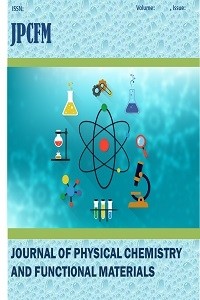Antioxidant Behavior of Hyoscyamus Niger Having Narcotic Effect on Heavy Metal Reduction and Radical Scavenging
Antioxidant Behavior of Hyoscyamus Niger Having Narcotic Effect on Heavy Metal Reduction and Radical Scavenging
Medicinal plants with various healing effects are essential for alternative therapy and adverse environmental conditions in daily life such as stress and heavy metals are both of the main causes of oxidative stress in cells. In this context, the regulation of free radical concentration associated with heavy metal toxicity and heavy metal elimination is essential for the health of cellular metabolic pathways against neurodegenerative diseases and cancer. Medicinal plants are important actors of alternative therapy and indispensable candidates for this effect. Hyoscyamus niger (H. niger) is a member of Solanaceae family with narcotic effect and is used in the treatment of various diseases besides as used as a painkiller. In this study, H. niger having therapeutic properties in various diseases was collected from Patnos/Ağrı province at 1635 m height. The ethanol extract was prepared using its leaves and several biological properties were evaluated to improve the moderate literature of H. niger. For this purpose, first, the heavy metal reduction tests (cupric ions reduction capacity by CUPRAC method and ferric ions reduction capacity by FRAP method) and DPPH radical scavenging activity were performed, and second, total antioxidant activity was investigated to verify the results of heavy metal reduction and radical scavenging effects.
Keywords:
Antioxidant, BHA, Solanaceae, Radical, heavy metal Hyoscyamus niger,
___
- Al-Snafi, A. E. "Therapeutic importance of Hyoscyamus species grown in Iraq (Hyoscyamus albus, Hyoscyamus niger and Hyoscyamus reticulates)-A review." IOSR Journal of Pharmacy, 2018, 8(6): 18-32.
- Apak, R., K. Güçlü, et al. "The cupric ion reducing antioxidant capacity and polyphenolic content of some herbal teas." International journal of food sciences and nutrition, 2006, 57(5-6): 292-304.
- Behravan, M., M. R. Vaezi-Kakhki, et al. "Comparing larvicidal Effect of Methanol Extract of the Aerial Parts of Henbane (Hyoscyamus niger L.) and Oleander (Nerium oleander L.) plants on Anopheles spp Larvae (Diptera: Culicidae) in Vitro." Zahedan J. Res. Med. Sci, 2017, 19: e8631.
- Blois, M. S. (1958). "Antioxidant determinations by the use of a stable free radical." Nature 181(4617): 1199-1200.
- Budak, H., H. Ceylan, et al. "Expression of glucose-6-phosphate dehydrogenase and 6-phosphogluconate dehydrogenase in oxidative stress induced by long-term iron toxicity in rat liver." J Biochem Mol Toxicol, 2014, 28(5): 217-223.
- Budak, H., N. Gonul, et al. "Impact of long term Fe(3)(+) toxicity on expression of glutathione system in rat liver." Environ Toxicol Pharmacol, 2014, 37(1): 365-370.
- Budak, H., E. F. Kocpinar, et al. "Stimulation of gene expression and activity of antioxidant related enzyme in Sprague Dawley rat kidney induced by long-term iron toxicity." Comp Biochem Physiol C Toxicol Pharmacol, 2014, 166: 44-50.
- Ceylan, H., H. Budak, et al. "Examining the link between dose-dependent dietary iron intake and Alzheimer’s disease through oxidative stress in the rat cortex." Journal of Trace Elements in Medicine and Biology, 2019, 56: 198-206.
- Dulger, G. and B. Dulger. "Antimicrobial activity of the seeds of Hyoscyamus niger L.(Henbane) on microorganisms isolated from urinary tract infections." J Med Plants Studies, 2015, 3(5): 92-95.
- Ghorbanpour, M., M. Hatami, et al. "Role of plant growth promoting rhizobacteria on antioxidant enzyme activities and tropane alkaloid production of Hyoscyamus niger under water deficit stress." Turkish Journal of Biology, 2013, 37(3): 350-360.
- Kausar, S., F. Wang, et al. "The role of mitochondria in reactive oxygen species generation and its implications for neurodegenerative diseases.", 2018, Cells 7(12): 274.
- Kumar, S. "A review on ethno-medicinal properties and plant tissue culture of high value solanaceous plants." J. Phytol. Res, 2017, 30(2): 63-75.
- Liberman, A. "An analytic dictionary of English etymology." Dictionaries: Journal of the Dictionary Society of North America, 1994, 15(1): 1-29.
- Mitsuda, H. "Antioxidative action of indole compounds during the autoxidation of linoleic acid." Eiyo to shokuryo, 1966, 19: 210-221.
- Nasibi, F., T. Heidari, et al. "Effect of arginine pre-treatment on nickel accumulation and alleviation of the oxidative stress in Hyoscyamus niger." Journal of soil science and plant nutrition, 2013, 13(3): 680-689.
- Oyaizu, M. "Studies on products of browning reaction: antioxidative activity of products of browning reaction." Jpn. J. Nutr, 1986, 44(6): 307-315.
- SajeliBegum, A. "Hyoscyamus niger linn. Seeds: a review." Research journal of seed science, 2010, 3(4): 210-217. Song, Q. and Y. Zhang "Application of high-fat cell model in steady-state regulation of vascular function." Saudi Journal of Biological Sciences, 2019, 26(8): 2132-2135.
- Unterladstetter, V. "Hyoscyamus niger–Schwarzes Bilsenkraut (Solanaceae)." Jahrb. Bochumer Bot., 2018, Ver 9: 233-242.
- Wickens, A. "The encyclopedia of Psychoactive plants: Ethnopharmacology and its applications." Library Journal, 2005, 130(13): 124-125.
- ISSN: 2651-3080
- Yayın Aralığı: Yılda 2 Sayı
- Başlangıç: 2018
- Yayıncı: Niyazi BULUT
Sayıdaki Diğer Makaleler
A Correlation Assessment of 222Rn Gas Measurements from the East Anatolian Fault Zone
Mücahit YILMAZ, Mehmet GÜRCAN, Yunus GÜRAL
Spectroscopic Properties Determination of Flavonol by Quantum Anaysis
Structure Determination of Serotonin Using Quantum Approximations
Analisis of Half Sphere receiver Model in molecular Communucation Through Diffusion
İbrahim IŞIK, M. Emin TAĞLUK, Mehmet Bilal ER
Analyzing of the Viscosity by Using Artificial Neural Networks
Population Analysis and UV-Vis spectra of Dopamine Molecule Using Gaussian 09.
Determination of Some Antioxidant and Antiradical Properties of T.Polium Ethanol Extract
